It’s often called the City of Love, and for good reason: Paris inspires l’amour with its stroll-worthy riverbanks, bridges and boulevards; its restaurants and museums that warm the heart and ignite the senses; and, the general misty-eyed, la-vie-en-rose loveliness of it all. But Paris has also earned its reputation for the city of romance by being home to some of history’s most ardent love stories. Here are a few of the most celebrated Parisian passions, and where to pay tribute …
Simone de Beauvoir & Jean-Paul Sartre

Okay, so not everyone would call the coupling of Simone de Beauvoir and Jean-Paul Sartre the most romantic of liaisons. Theirs was a very open kind of relationship in which their ‘essential love’ allowed for a string of ‘contingent loves’ — in plain speak: ‘affairs.’ And hey, at least it was great fodder for great literature, such as Beauvoir’s She Came to Stay. The arrangement, for the most part, worked perfectly for the couple. They’d custom-created it after meeting as bright-eyed Sorbonne philosophy students, attempting to find a middle ground between celebrating their cherished personal freedom while also recognising a soulmate. Their affection was deep and it was life-long — right through to a shared resting place.
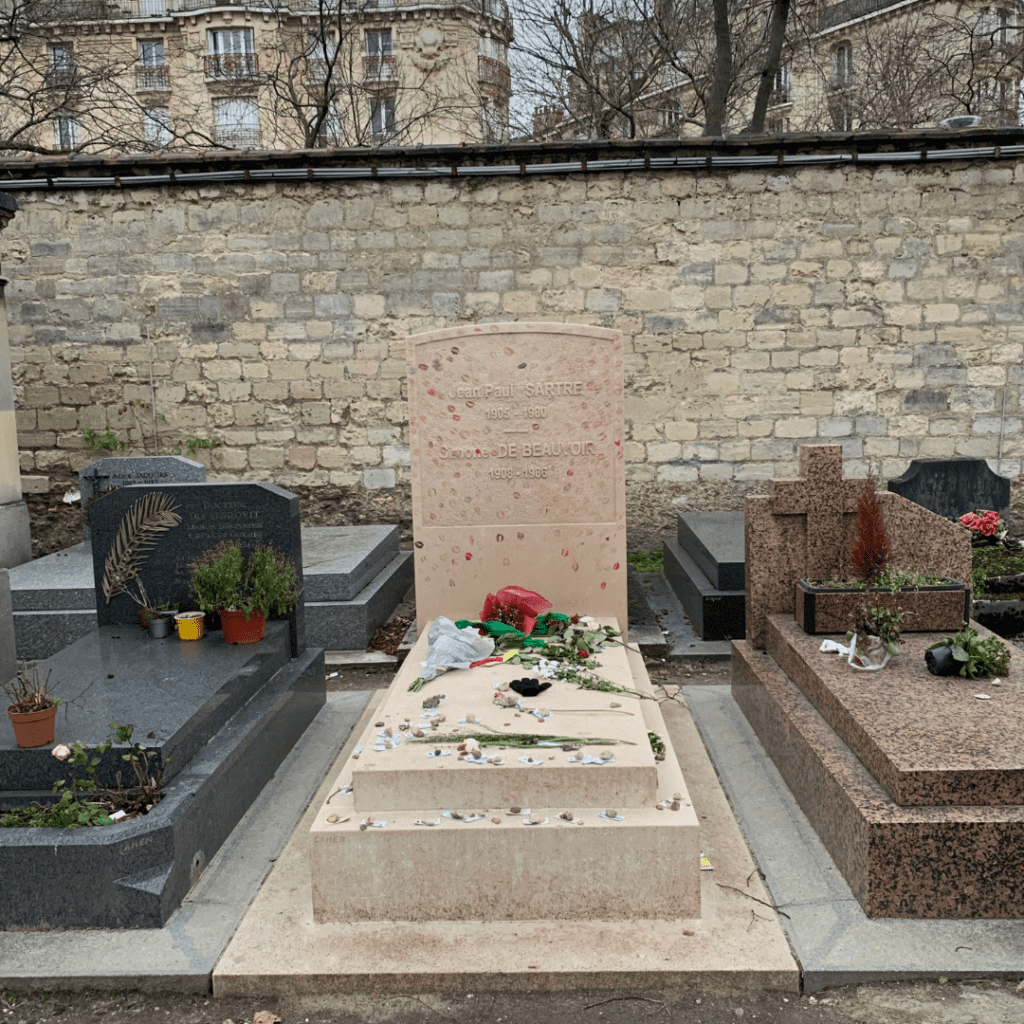
Where to pay homage: Start at Café de Flore. The pair began coming here in the late 1920s, as students, shunning Les Deux Magots, which was more fashionable at the time. During the war years, as full-time writers and thinkers, it was on these red moleskin banquettes that they would beaver away, a pot-belly stove keeping their bodies cosy and brains fired up. And it was here that Sartre, with Beauvoir’s help, incubated his theory of Existentialism, writing his seminal essay Being and Nothingness, in which he famously proclaimed ‘existence precedes essence.’ Later, Beauvoir showed how women could apply Existentialism and its tenets of freedom and authenticity to their own lives, with her seminal proto-Feminist thesis, The Second Sex, much of which was written at the Flore in the post-war years. After the Flore, wander southwards to Montparnasse Cemetery, where you’ll find their dual grave. It’s the one covered in flowers and lipstick kisses (above).
Anaïs Nin & Henry Miller
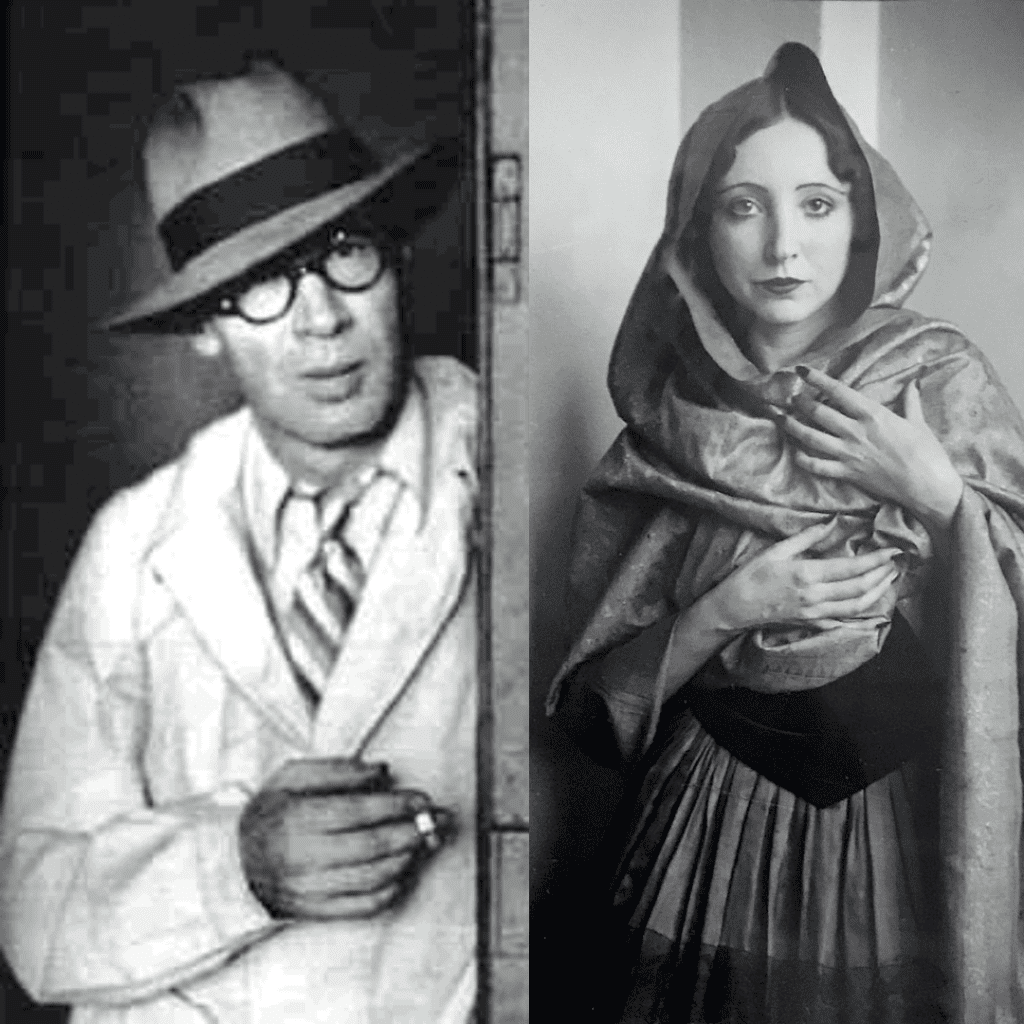
If you’ve read the book Henry & June (based on the Unexpurgated Diary of Anaïs Nin), you’ll know just how steamy this relationship was. Anaïs was a bored housewife of an American expat banker, living a pretty life in a sweet Louveciennes villa but dreaming of much, much more. And then, as if on cue, in walked Henry. Similarly on the cusp of literary greatness, Henry awakened Anaïs’s passion for life (‘He’s a man whom life makes drunk, I thought. He is like me.’), and they embarked on a now-infamous literary-erotic affair. But Anaïs was more than just his lover; she mothered and mentored him, which included helping to edit and finance his first book, Tropic of Cancer.

Where to pay homage: Have a drink at La Rotonde (above), where Henry confessed to Anaïs that he’d written her a love letter. (To appreciate just how great these two were at love letters, read A Literate Passion, edited by Gunther Stuhlmann. Warning: might cause hot flushes.) They would go on to meet furtively in many other Montparnasse cafés and bars, most of which are lost to time, but the Central Hôtel, where Henry was then living and where they eventually started their physical relationship, is open to this day. (Check into room 40, if you’re really after a voyeuristic thrill!)
Lee Miller & Man Ray

A successful Manhattan model, Lee Miller was destined for an eventful, exciting life. For starters, she was determined to switch to the other, more creative side of the camera and so, in 1929, she ventured to the capital of global creativity, Paris, and made a bee-line for the most exciting photographer in town. Another American expat, Man Ray ran in the top-tier creative circles of Paris, and his Surrealist photos graced the pages of French Vogue. A new-to-town Lee tracked down Man’s address, and turned up at his Montparnasse building, only for the concierge to inform her he’d just left for Biarritz. Hopes dashed, she took herself to a nearby bar to drown her sorrows in Pernod … when Man suddenly appeared. As Lee later recalled, ‘I told him boldly that I was his new student. He said he didn’t take students, and anyway he was leaving Paris for his holiday. I said, I know, I’m going with you — and I did.’ They lived together for the next three years, in a relationship that evolved into an apprenticeship. Together they developed the solarisation technique where light and dark in an image could be reversed by exposing a developing photograph to a flash of light; Lee had first come upon this potential one day in the darkroom. Lee eventually returned to New York, having fully blossomed as a gifted photographer herself, leaving Man Ray to mourn her absence by painstakingly painting her lips in his famed work, The Lovers.
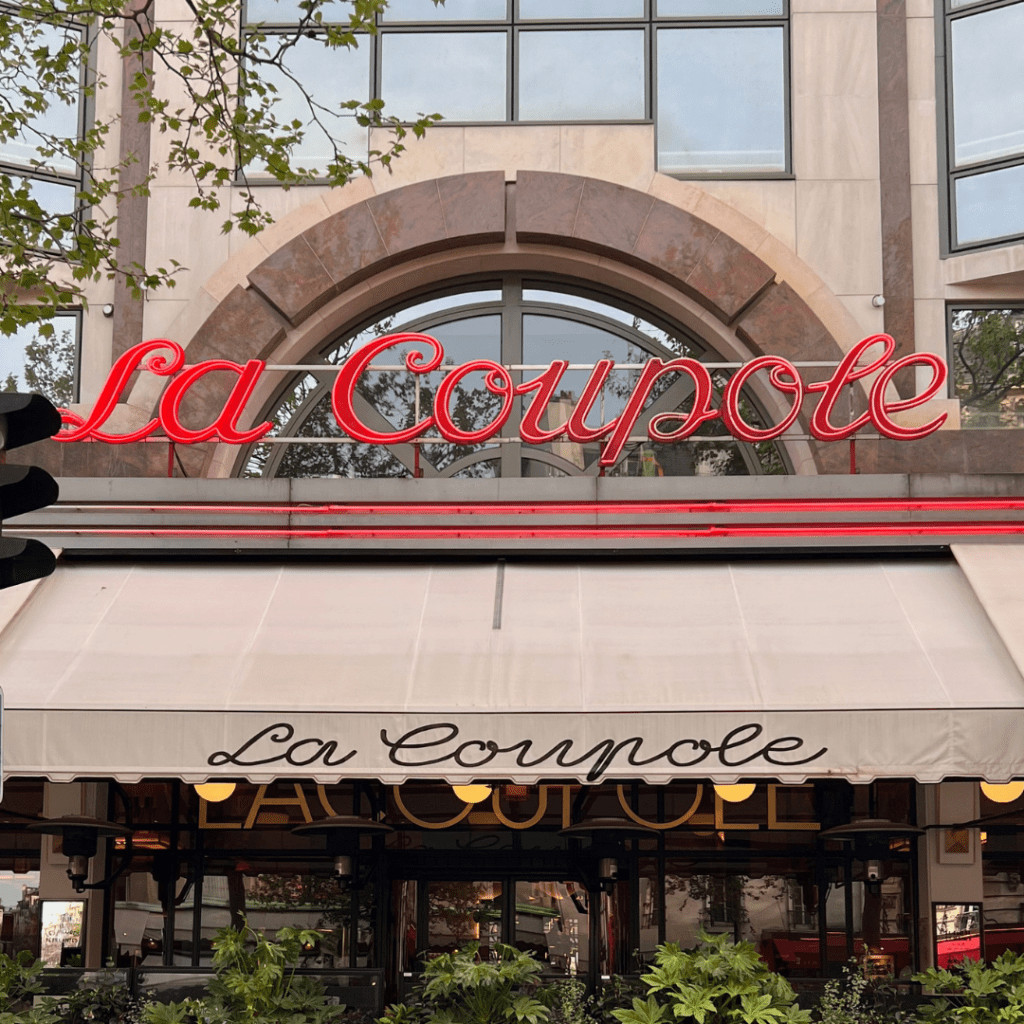
Where to pay homage: Man’s studio — where Lee lived for a few years — was on the ground floor of a building of artist ateliers, at 31bis Rue Campagne-Première, 75014; admire its sweet ceramic-tiled, late-Art Nouveau façade from the park across the street. As with Anaïs Nin and Henry Miller, many of Lee’s and Man’s favourite local haunts have disappeared, but they did love dining or drinking at the Art Deco brasserie and American bar La Coupole (above), which is still going strong and well worth a visit for the artistic interiors as much as the hearty fare.
George Sand & Frédéric Chopin

She was a Romantic author with a life as novelesque as those of her characters (her father descended from the King of Poland, her mother from a bird-seller). A mesmerising mix of a woman, Amantine-Lucile-Aurore Dupin could seamlessly switch from the lace gowns she wore in her country château to the masculine suits and boots of her nom de plume, which allowed her to stride about Paris, for she was a force of a woman, with places to go, things to do. A lover of beauty, music, art and, above all, love, she was always bound to meet and fall for Frédéric Chopin, a Polish poet of the piano whose increasing acclaim allowed him to move from bohemian Parisian beginnings to a much grander style of living. It was a case of opposites attract. Chopin was painfully shy, a delicate dandy. George, six years older and dressed in men’s clothes, talked and smoked and lived with gusto. But inside, they were true Romantics. He saw past the tough suits, into her soulful eyes; she nurtured his inner strength, mothered him. It didn’t last; capital-R Romantic affairs rarely did. And, like something from a Romantic novel, he died an agonising death of tuberculosis, at the too-young age of 39. But while together, they inspired one another to sublime creative, and emotional, heights.
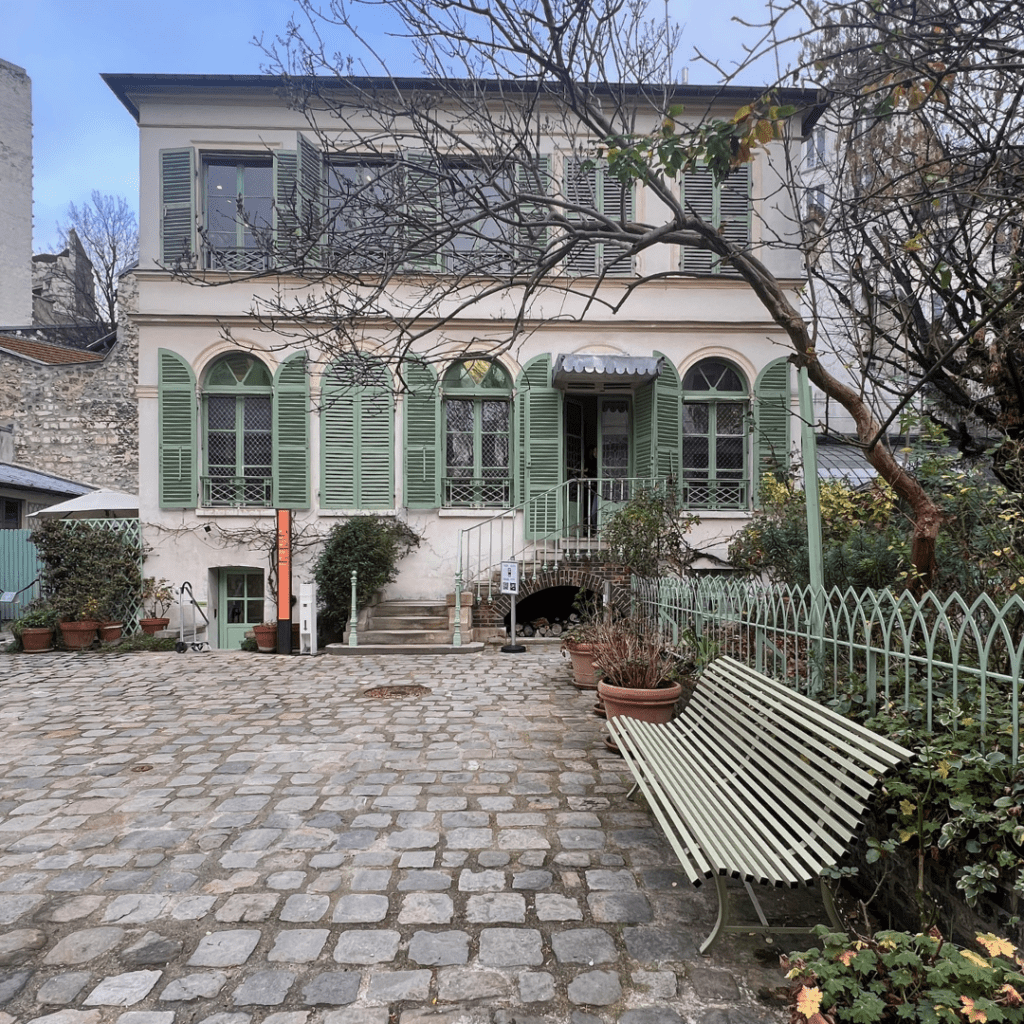
Where to pay homage: George and Frédéric lived for a while in Square d’Orléans, a Regency London-like courtyard of creamy, column-clad facades overlooking magnolia trees and a tinkling fountain. Enter it on a weekday, at 80 Rue Taitbout, 75009, and you’ll find plaques marking both of their apartments. Fun fact: Alexandre Dumas père, of The Three Musketeers fame, Marie Taglioni, the first ballerina to dance in a fluttering white tutu, and Baudelaire were all residents, making this very much a sacred site of Romanticism. Speaking of which, next head to the Musée de la Vie Romantique (above). One of Paris’s most delightful museums, set in a storybook pavilion and fragrant garden, the Musée de la Vie Romantique is dedicated to George and her friends (sigh over the delicate plaster-cast hands of George and Frédéric, among other whimsical items), this address was originally the house of Ary Scheffer, and George and Chopin would venture down this very cobbled lane every Friday night, en route to the Romantic painter’s weekly salon.
Joséphine & Napoléon
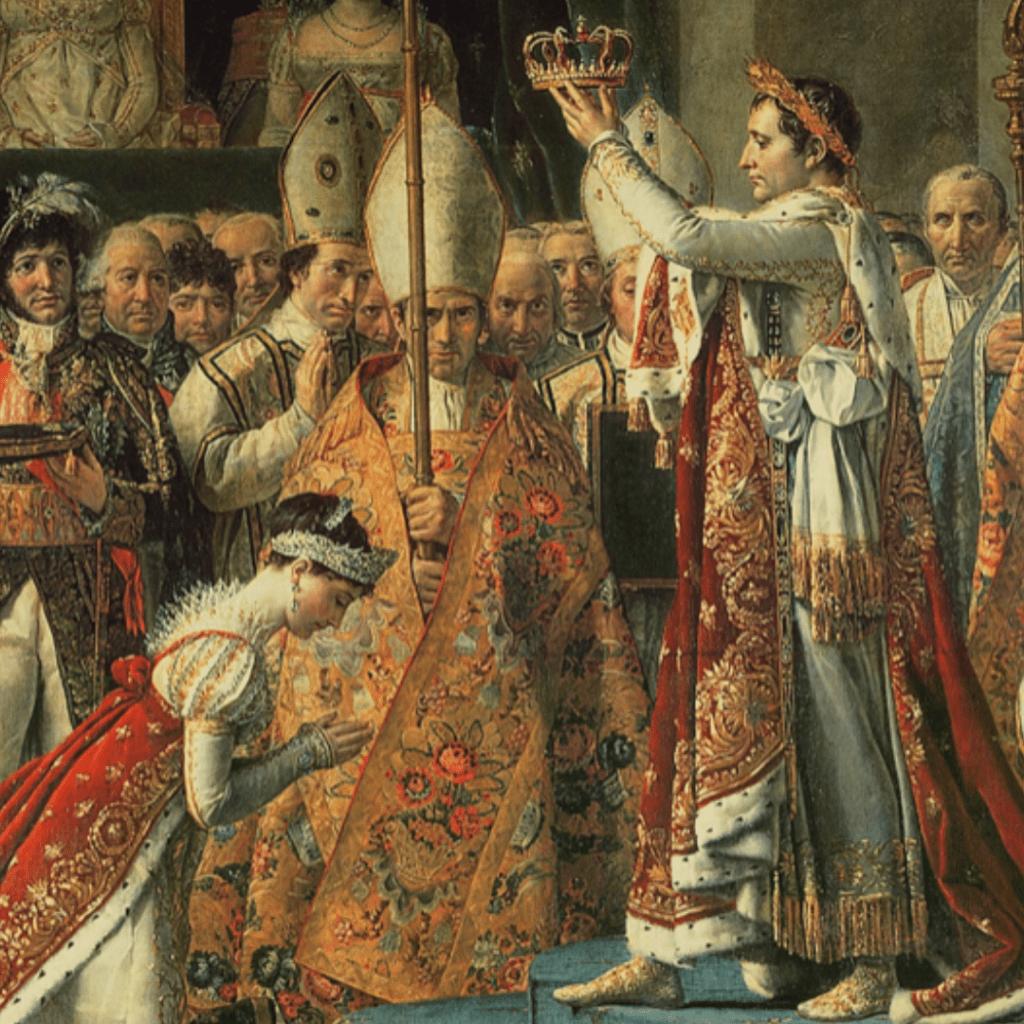
There’s not much to say that isn’t already known about what is arguably history’s most tumultuous, emotionally tortured love tale. There are so many heart-palpitating elements to their story: his letters steeped in lust as much as distrust; her slow, steady transformation from cool femme fatale to desperately, hopelessly in love; his ultimate, humiliating, public rejection; her death from heartbreak, his last breathy word of ‘Joséphine’ … It has everything: power, drama, love, betrayal … No wonder their story has inspired so many books and movies.

Where to pay homage: In March 1796, after Joséphine finally agreed to a lovesick Napoléon’s marriage proposal, the couple wed in a civil ceremony at 3 Rue d’Antin, 75009. The building is no longer occupied by the 2nd arrondissement mairie but a plaque marks the momentous event. When not away on duty, Napoléon lived with Joséphine on Rue Chantereine (which was renamed Rue de la Victoire). Sadly, her elegant manor house no longer exists, but the lovely country estate just west of Paris that she bought for herself while Napoléon was in Egypt — Château de Malmaison (above) — remains in all its neo-Classical glory — she had it decorated in honour of her husband and his victories. It’s a must-visit for lovers of history, gardens, architecture, and, of course, l’amour.

